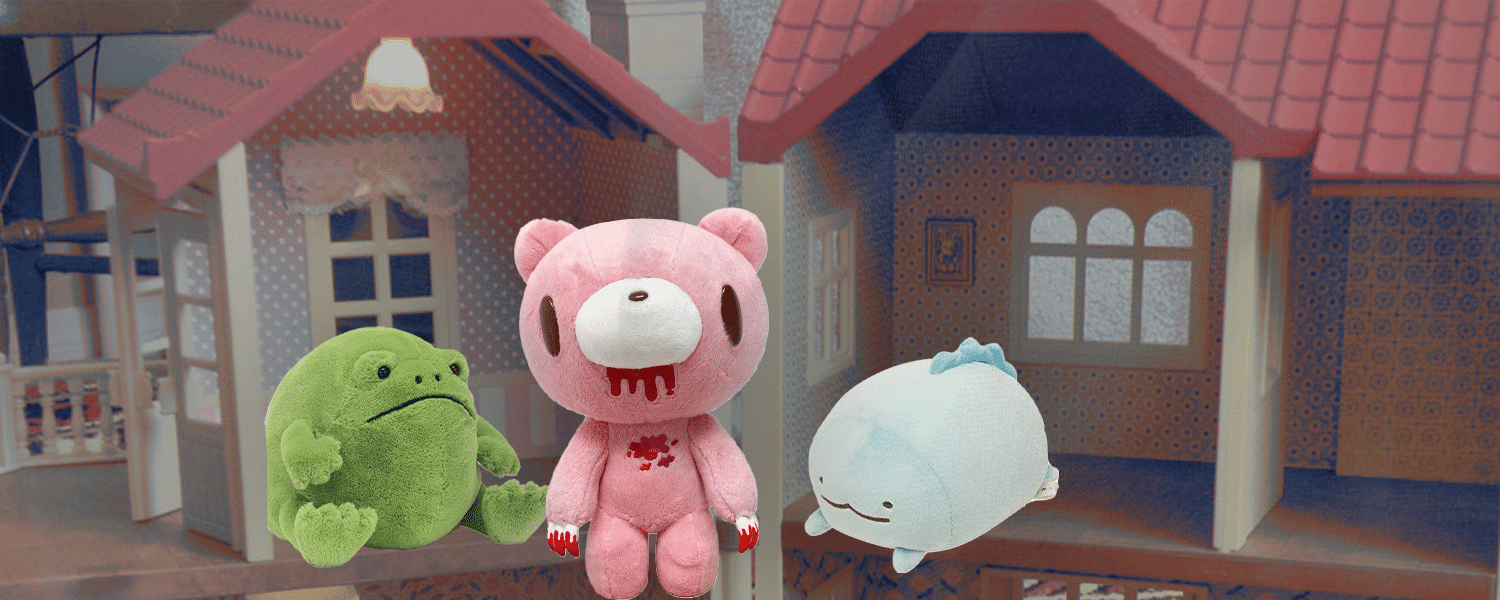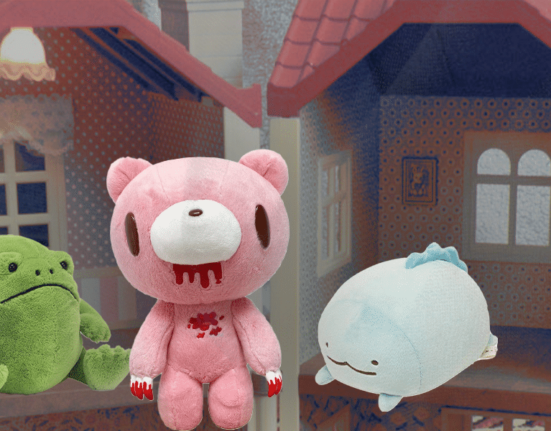IF you’ve been on the internet recently, you’ll know just how much the beloved characters of Sanrio seem to have taken over the web. Though Hello Kitty has always been popular in the Philippines, people have also started taking notice of her adorable friends like Kuromi, My Melody, and Cinnamoroll.
At present, Sanrio has become extremely mainstream. Some may even argue that it’s become too mainstream; with more demand for these characters on the market comes the rise in the prices of their plushies, stationery, accessories, and the like.
If you’re finding all the Sanrio hype to be a little too much, or have simply gotten over it and are now on the lookout for something new to obsess over, here are some other colorful characters that you can start collecting if you haven’t yet heard of them.

- Sumikko Gurashi
In English, ‘sumikko gurashi translates to “Life in the corner.”
These characters were created by Yuri Yokomizo, a graphic designer of San-X. They started as nothing but doodles on her notebook while she was still in school, and have since turned into one of the most popular bunch of characters in Japan.
Some of the Sumikko Gurashi characters you can fall in love with are Shirokuma, a polar bear that left the North Pole because it hated the cold; Tokage, a little dinosaur that likes to pretend it’s a lizard; and (a personal favorite) Tonkatsu, a pork cutlet slice that enjoys pouring sauce on itself hoping it’ll entice someone to finally eat it.
There’s also Penguin?, who is unsure of whether or not it’s really a penguin; Neko, a cat that loves to eat; and a number of other fun little side characters called the Minnikos, who often appear as sidekicks to the Sumikkos.
Given that they have traits people can connect with like being self-conscious or being confused about their identity, they feel much more relatable compared to characters with no purpose aside from just being cute.
As stated by author Marceline Smith, these characters feel left out and are especially relevant to today’s generation who often go through uncertainty in their daily lives.

- Gloomy Bear
If you’re looking for something on the edgier side, then Gloomy Bunny is the perfect thing for you to obsess over next.
Gloomy the Naughty Grizzly – more popularly known now as Gloomy Bear – is a creation of graphic designer Mori Chack. He’s a huge pink bear who at first glance is quite cute-looking. But don’t be fooled.
As soon as your eyes veer lower, you’ll see his sharp claws covered in blood. As per anime merchandise store Atsuko, he’s meant to be the antithesis of all things cute and mascot-like. He seems huggable, sure, but he’s by no means friendly.
Recently, an anime of the character has been released and is available for viewing on YouTube. These episodes detail the origins of Gloomy Bear and give the audience a deeper look into his personality aside from just being adorable and scary all at once.
Gloomy Bear is a reminder to all that while these animals may be pleasing to look at, they’re still animals and will attack when they feel it’s necessary – though perhaps not with methods as outlandish as those of Gloomy Bear’s.

- Kumamon
If you were to first see Kumamon, you might think that it’s from an anime, or is from a character manufacturing company, but no. Surprisingly enough, Kumamon was created by the government of Japan’s Kumamoto Prefecture back in 2011.
This is nothing out of the ordinary in Japanese culture. In Japan, every prefecture has one, serving as a representation for the place. They refer to these mascots as yuru kyara or “loose character,” and they are also used to promote events, organizations, and businesses.
Since its release, Kumamon has been dubbed the golden standard for mascots in Japan, given the amount of sales it’s managed to bring in thus far.
At present, Kumamon is still one of the most popular of Japan’s mascots. Its Twitter alone has amassed over 800,000 followers, and people don’t just show their support through likes and follows.
BBC’s Neil Steinberg wrote how, during its birthday, over 150 people showed up to celebrate it with Kumamon. When an earthquake rocked the country, people were quick to confirm whether or not Kumamon was okay.
Over time, Kumamon has become less a mascot in Japan and more a living entity or even a household god. And the cutest one, at that.

- Danbo
If you were surfing the web during the early 2000s, then you may have seen a meme of Danbo at least once.
Danbo comes from Kiyohiko Azuma’s manga entitled Yotsuba&!, which looks at the life of an unusual five-year-old girl named Yotsuba Koiway as she moves to a new city with her adoptive father.
Danbo is introduced when Yotsuba’s friend Miura dresses up as a robot, and Yotsuba thinks the robot is real.
Not wanting to hurt her feelings, Miura continues to pretend to be a robot – one named Danbo, which is inspired by the Japanese word “danboru.” This translates to “cardboard” in English because, in the manga, that’s what Miura’s robot was made out of.
Even though its features are simply made of two circles and a triangle, there is a particular sadness in its eyes.
Perhaps that’s why it was turned into an internet meme only a few years later, wherein people would try to recreate it using whatever boxes they had lying in their homes. For this, they changed its name to “Danboard,” or simply referred to it as the “Amazon Robot.”
One thing that hasn’t changed, though, is what Danbo’s meant to represent: first and foremost, it is a simple representation of curious innocence.

- Jellycat
Jellycat originates from the UK and is made up of several adorable, fuzzy characters. While Sanrio may have outlandish characters like grandmas and teeth and fruit punch, Jellycat has spiders, grumpy frogs, and insects galore.
This company is different from the rest on the list because a lot of its characters look different from one another. However, one thing that they all seem to have is that singular warm, dopey energy that you get from your friend with whom you’re most comfortable sharing all your secrets.
As per its website, Jellycat aims to combine rich, luxurious fabrics with cute, quirky creatures that stand out from the rest of the crowd.
“The name Jellycat was dreamt up by a child who loved jellies and cats and giggled at the thought of the two together,” the company wrote.
“The silliness of the name was a great reflection of the design and so it stuck!”
If you’re looking for something funny-looking and just plain silly, Jellycat’s a great go-to. It often releases new collections as well, so there’s always something to look forward to.
How useful was this post?
Click on a star to rate it!
Average rating 0 / 5. Vote count: 0
No votes so far! Be the first to rate this post.
We are sorry that this post was not useful for you!
Let us improve this post!
Tell us how we can improve this post?






